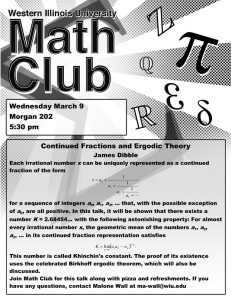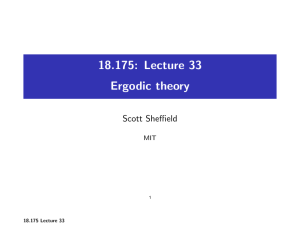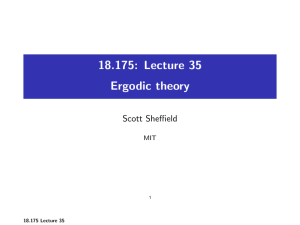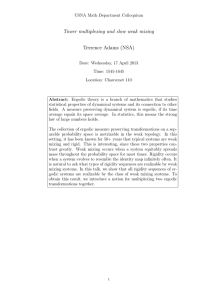14.451 Problem Set 4 1 Persistence and inertia Fall 2009
advertisement
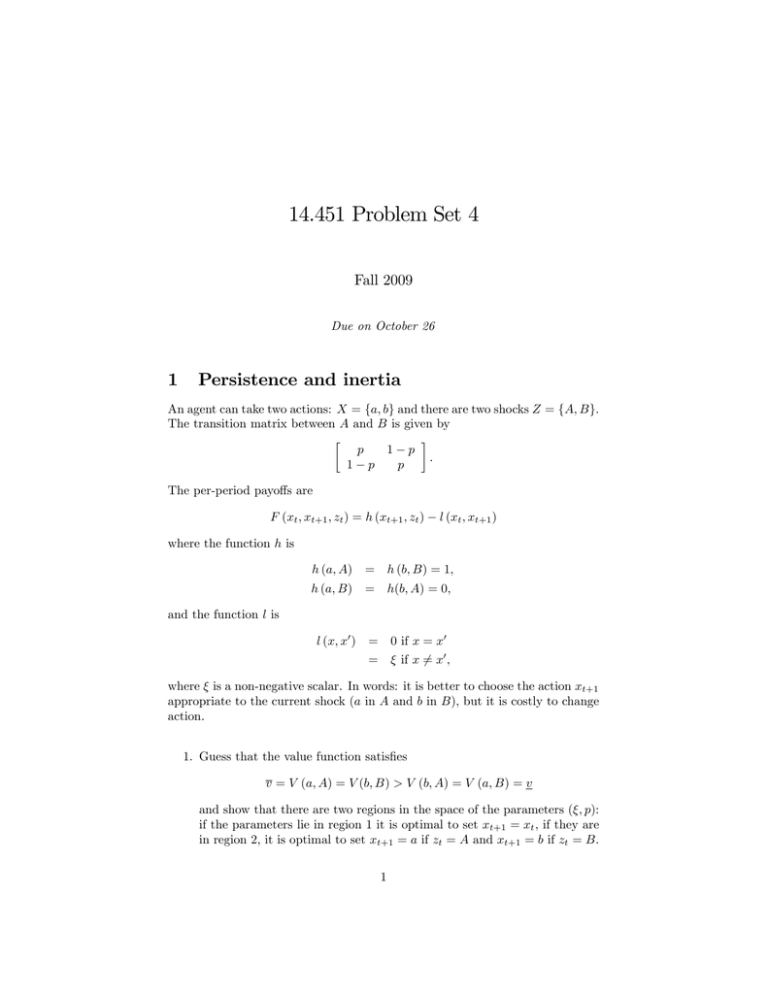
14.451 Problem Set 4 Fall 2009 Due on October 26 1 Persistence and inertia An agent can take two actions: X = fa; bg and there are two shocks Z = fA; Bg. The transition matrix between A and B is given by p 1 1 p p p : The per-period payo¤s are F (xt ; xt+1 ; zt ) = h (xt+1 ; zt ) l (xt ; xt+1 ) where the function h is h (a; A) h (a; B) = h (b; B) = 1; = h(b; A) = 0; and the function l is l (x; x0 ) 0 if x = x0 if x = 6 x0 ; = = where is a non-negative scalar. In words: it is better to choose the action xt+1 appropriate to the current shock (a in A and b in B), but it is costly to change action. 1. Guess that the value function satis…es v = V (a; A) = V (b; B) > V (b; A) = V (a; B) = v and show that there are two regions in the space of the parameters ( ; p): if the parameters lie in region 1 it is optimal to set xt+1 = xt , if they are in region 2, it is optimal to set xt+1 = a if zt = A and xt+1 = b if zt = B. 1 2. Show that increasing p (more persistent shocks) tend to make the agent more responsive (going from region 1 to region 2). Interpret. 3. Derive the optimal stochastic dynamics as a Markov chain on S = X Z. 4. Show that if the model parameters are in the interior of region 1, there are two ergodic sets. If they are in the interior of region 2, there is a unique ergodic set. 5. Derive the unique invariant distribution in the second case. 2 Invariant distributions and ergodic sets Suppose you have a Markov chain which satis…es the property that for some j, i;j > 0 for all i. Let p be the unique invariant distribution. P 1. Show that P if E is an ergodic set then taking any p such that i2E pi = 1 we have P i2E [pM ]i = 1. In other words, maps probability distributions with i2E pi = 1 into probability distributions with the same property. 2. Prove that if E is an ergodic set and i 2 = E then pi = 0. (Hint: use the contraction mapping theorem). 3. Prove that if E is an ergodic set then pi > 0 for all i 2 E. (Hint: go by contradiction, suppose there is an ergodic set which is a proper subset of E and show that then there exists an invariant distribution di¤erent from p .) Argue that the unique ergodic set is E = fi : pi > 0g : 3 Optimal control Solve Excercises 7.4 and 7.13 in Acemoglu (2009). 2 MIT OpenCourseWare http://ocw.mit.edu 14.451 Dynamic Optimization Methods with Applications Fall 2009 For information about citing these materials or our Terms of Use, visit: http://ocw.mit.edu/terms.
